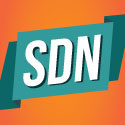The open source SDN network operating system is also being used in an open source router running on white box hardware.

SANTA CLARA, Calif. -- Open Networking Summit -- ONOS is on a roll. The community developing the open source SDN network operating system this week announced the software's first wide-scale production deployment on the Internet2 research network. And it's demonstrating an open source router running on white box hardware.
That's on the heels of working with AT&T and chip vendors PMC-Sierra and Sckipio Technologies on a proof-of-concept called Central Office Re-architected as Data Center (CORD). CORD is a key step in developing a cloud-oriented wide area network. (See AT&T to Show Off Next-Gen Central Office.)
The Internet2 deployment is the first big deployment of ONOS on a live network, Guru Parulkar, executive director and board member for ON.Lab , which leads ONOS development, told Light Reading. (See Internet2 Implements First Large-Scale Deployment of ONOS on a Live Network.)
Internet2 is a research and education network in the US, connecting 3,000 nonprofit entities, including universities, libraries and community colleges. "Because they operate a research and educational network, they are leading edge," Parulkar says. Internet2 is based on OpenFlow, using primarily equipment from Brocade Communications Systems Inc. (Nasdaq: BRCD) with some from Juniper Networks Inc. (NYSE: JNPR)
Internet2 partitions its network into "slices" -- virtual networks that give users private access to all the underlying network hardware. "They can create slices and give different people a slice, but nobody has used it until now," Parulkar says. "They created a slice and given it to us. Now there is a slice of the Internet2 network that is run by ONOS."
The Internet2 implementation is running an SDN IP peering application, similar to software used in a demo connecting the US and Australia with an SDN network last month. (See Open Source Router Connects US, Australia.)
The ONOS support will allow Internet2 to offer new services to universities. "That is the benefit to Internet2. The benefit for us is we've learned what it takes to get ONOS onto a production network," Parulkar says.
In addition, Parulkar says, the ONOS community plans to demonstrate SDN control of multilayer packet optical network, built with multivendor equipment from Huawei Technologies Co. Ltd. , Ciena Corp. (NYSE: CIEN) and Fujitsu Ltd. (Tokyo: 6702; London: FUJ; OTC: FJTSY)j.
The ONOS community is also working with the Open Networking Foundation on the ONF's Atrium open source release. Atrium 2015/A, released last week, includes the Border Gateway Protocol (BGP), ONOS and Open Compute Project components.
ONOS is running an open source router using Atrium software on eight different white boxes. "You can take Atrium, ONOS and an SDN IP peering application and turn any one of those boxes into a functional IP router, interoperating with the other boxes and with legacy routers," Parulkar says.
"This router is built with all open source and merchant silicon," Parulkar says.
ONOS is demonstrating formidable momentum, Parulkar says.
Want to know more about SDN? Visit Light Reading's SDN Technology content channel.
"We open sourced ONOS in December. Six months into it, we did two major releases. On one release, we demonstrated scalability, performance and high availability. That is a big deal that no other open source controller has done." (See ON.Lab Intros Open Source SDN OS.)
The second release, "Blackbird," in April, focused on performance, scale and high availability. (See ON.Lab Aims to Make White Boxes Carrier-Grade .)
And the third ONOS release, "Cardinal," early this month, is designed to enable new deployments and proofs of concepts (POCs), with enhancements to the application abstraction layer and southbound interfaces. (See 'Cardinal' Takes Flight: ONOS Ships New Open Source SDN OS Version.)
The latest release adds critical southbound interfaces, such as Netconf and BGP, and improves performance 25%, Parulkar says.
— Mitch Wagner, 


 , West Coast Bureau Chief, Light Reading. Got a tip about SDN or NFV? Send it to [email protected].
, West Coast Bureau Chief, Light Reading. Got a tip about SDN or NFV? Send it to [email protected].
About the Author(s)
You May Also Like











